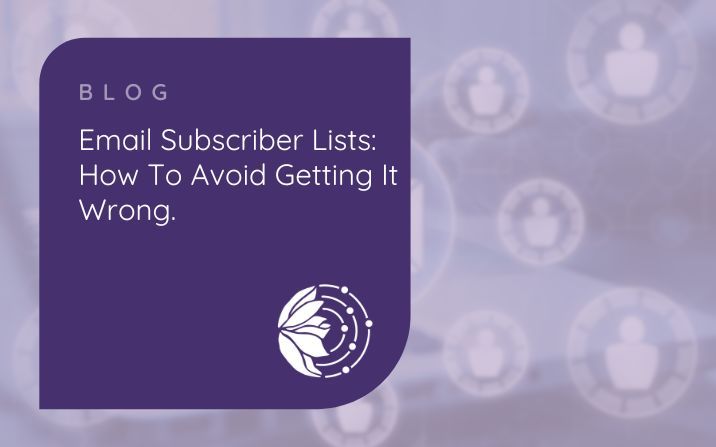Email Subscriber Lists – How To Avoid Getting It Wrong!
UPDATE: Since writing this blog the Data Protection Act has been replaced with GDPR – much of the advice in here is still correct but do ensure that you review our blogs on GDPR for more information.
There’s a lot of buzz around email marketing at the moment, and there’s little surprise when a carefully crafted campaign can become a powerful tool for lead generation. If you’re reading this, chances are high that you’ve already collected data for an email subscriber list or you’re wondering how to get started.
Stop right there!
It’s important that you stay on the right side of the law with your email marketing campaigns – how you create and manage your subscriber list could cause you to breach the Data Protection Act.
Hands up if you’ve returned from a business networking event, and added details from the business cards you’ve been given into your contacts database? That isn’t a problem if the information is kept secure and only used for the purposes of keeping in touch with the people you’ve met.
Remember, that you’re not allowed to share your contacts lists, sell it or use the information collected for any other purpose – and that’s where things get tricky when you then add those details to your email subscriber list.
According to the Data Protection Act, you must check how customers want to be contacted by you – and always give them the option to say no, and opt out of further communications.
The ‘opt out’ is very important, which is why we recommend Mailchimp for your email marketing as it takes care of this for you – it actually won’t let you send anything if you haven’t completed this section.
Let’s face it, even without the law, it’s never nice receiving an email trying to sell you something out of the blue, is it? Marketing and sales emails seldom get opened if they’re not expected – so focus your efforts on an audience that is already engaged with you and your business. The best way to add data to your email subscriber list, is to enable people to add themselves.
So, what are the tried and tested techniques for building up your email subscriber the right way?
Actually ask the people you meet
If you’ve just had a lovely conversation at a networking event, and it comes to sharing business cards – ask if they’d like to be added to your newsletter. They’re unlikely to say no, but remind them that they’re free to opt out if they don’t find it useful.
It can be helpful to reinforce why you think they’ll find it helpful – “I just shared a blog about this very issue in my last newsletter, can I add you to my email list and send you a copy?” At this point they’re engaged with you, expecting to receive emails from you, and they’re already anticipating you being useful to their business – it’s exactly who you want to be reading your emails!
Make it easy for people to opt in
A lot of your email subscribers will be people you’ve not met yet. They’ve found your website and like what you have to offer – so having an opt in form readily available on your website can turn an interested visitor into an engaged subscriber in just a few clicks.
Did you know that 56% of visitors will land on pages other than your homepage? Make sure your email opt in is easy to find.
Offer a freebie
Who doesn’t like a freebie? We’re not talking about a free pen or trolley token here. Offer something your ideal client will find useful. What services do you offer? Which of their needs can you fulfil? Enforcing your expertise with something your client will find useful ensures that they remain engaged with you. An e-book, list of tips, checklist, free stock images, etc. all work well.
Share your expertise
This is a little-known hack that can really help enforce your expertise, and gain new email subscribers in the process. Your blogs and email marketing content, if done properly, should be useful to your target audience. Head over to Quora and search for questions related to your blog (you’ll be surprised what people ask questions about!). Then give a short reply briefly explaining the answer with a link to your newsletter opt-in and the related blog or article. Give it a go, it works!
Email subscribers should fall into the quality rather than quantity category – you want readers who are already engaged with you, and your business, if your marketing emails are going to achieve the outcome you’re looking for. So, ignore those dodgy list building techniques, stay on the right side of the Data Protection Act, and you’ll get much further with your email marketing.

